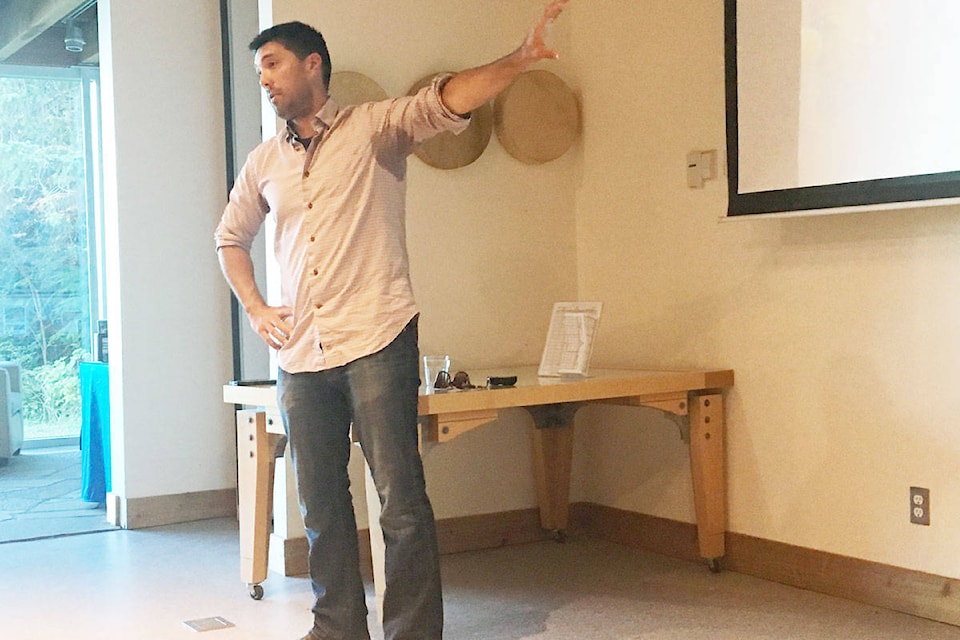By Olivia Favreau
Citizens of Haida Gwaii and interested tourists were treated to a talk by marine ecologist Daniel K. Okamoto last Wednesday, July 25.
Hosted at the Haida Heritage Centre, the talk was part of a speaker series on resources and eco-work. The presentation was called “Help the Kelp: Conserving Herring and Abalone in the Pacific Northwest,” and it highlighted the difficulty of research when communities of fish, kelp and abalone are so spatially diverse.
Okamoto described how commercial/community fishing and predators are affecting the herring population. His research was mostly based along the central coast in three communities with connections to herring: Klemtu, Bella Bella and Oweekeno.
Okamoto and his team found herring were spawning deeper in fjord habitats, which is very uncharacteristic of these fish. Many were laying eggs in odd places.
Furthermore, they found that the eggs which had been located deeper than normal had a poor survival rate, prompting his team to continue researching why these fish had decided to do this. Interestingly, herring seem to get smaller from west to east, another trend the scientific team intends to look into.
Okamoto also alluded to several struggles he encountered while on this project, such as spatial mismatches that create conflict when trying to compare data.
READ MORE: Sea otter recovery may bring fewer abalone, but richer kelp
He brought up several new questions and concerns: Can pulling back on harvest, or optimizing allocation help declining herring rates?
There is no definitive answer to this, of course, as this is still being answered. But Okatomo brought forward some more useful information: spacial optimizing can reduce collapses but it increases logistical costs, prompting the question of whether this solution is worth the expenditures.
However, what is certain is the idea of closing commercial fisheries earlier to keep herring populations healthy enough to harvest is a myth. Doing this does not keep the fish biomass from plummeting, especially in such a spatially diverse area.
Okamoto’s last point in the herring portion of the talk was that spatial stock assessment can improve estimated stock dynamics, meaning there may be better ways to keep the harvesting of herring as sustainable as possible.
As he moved on to abalone, Okamoto made it clear that they are very much an endangered species. Two of the factors are declining kelp forests and predators such as otters.
However, in his research, Okamoto has found that urchins have left entire kelp forests razed to the ground. These “urchin barrens” are a global phenomenon. Without the kelp, abalone are having a hard time finding food, which also contributes to their declining numbers.
For now, abalone are surviving mostly on small, scrounged crops of algae.
Okamoto’s team plans to answer the question of how to help abalone that are being impeded by urchin overgrazing. To do so, they have employed the help of some fishers to do an experimental urchin harvest to bring their numbers down. Furthermore, the team will be using biochemical tracers to take tissue samples of abalone and how they eat.
The presentation closed with this point: when considering the science and philosophy of conservation and management, the scales at which populations of people operate must be taken into account.
